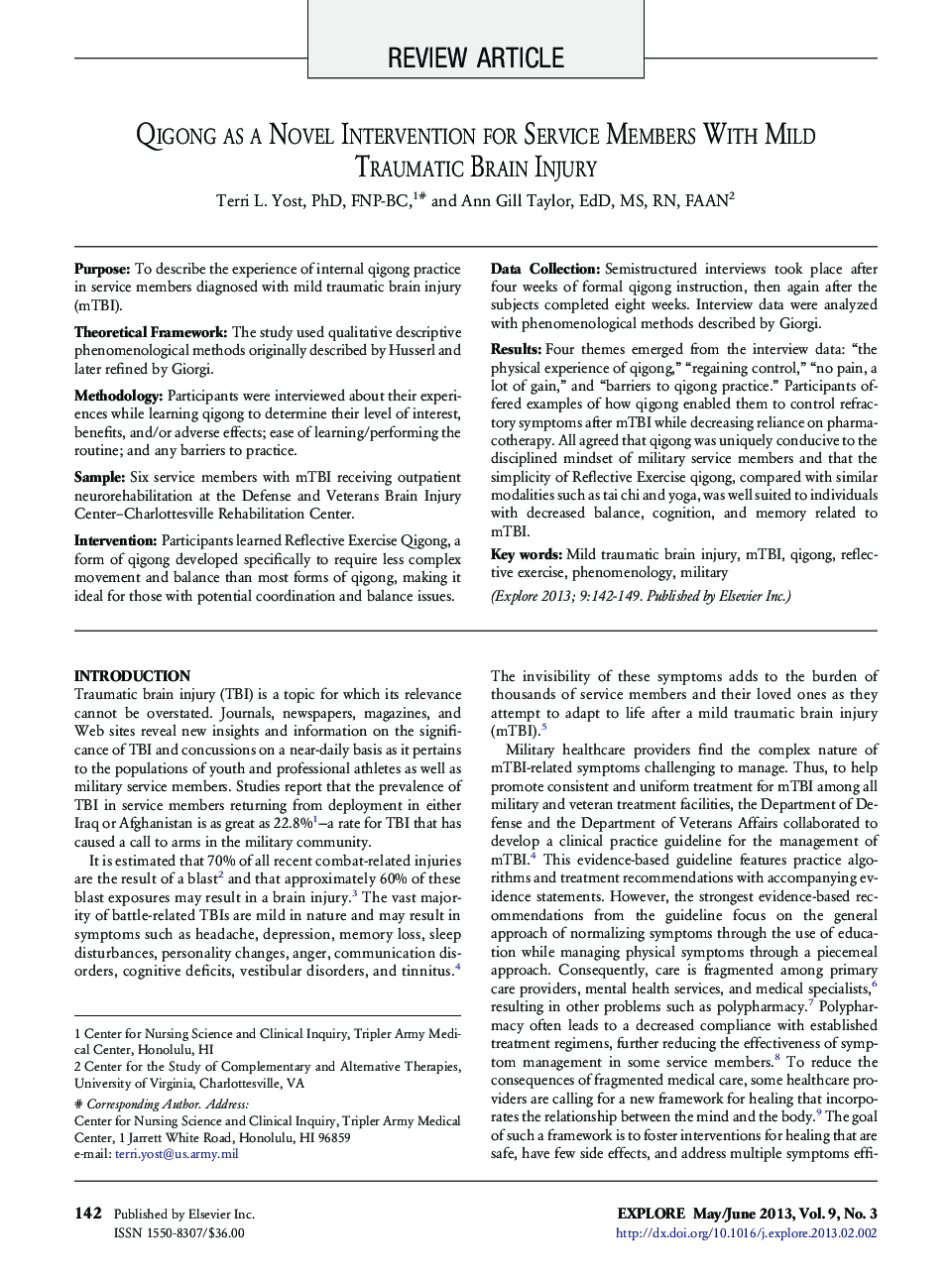| Article ID | Journal | Published Year | Pages | File Type |
|---|---|---|---|---|
| 2686138 | EXPLORE: The Journal of Science and Healing | 2013 | 8 Pages |
PurposeTo describe the experience of internal qigong practice in service members diagnosed with mild traumatic brain injury (mTBI).Theoretical FrameworkThe study used qualitative descriptive phenomenological methods originally described by Husserl and later refined by Giorgi.MethodologyParticipants were interviewed about their experiences while learning qigong to determine their level of interest, benefits, and/or adverse effects; ease of learning/performing the routine; and any barriers to practice.SampleSix service members with mTBI receiving outpatient neurorehabilitation at the Defense and Veterans Brain Injury Center–Charlottesville Rehabilitation Center.InterventionParticipants learned Reflective Exercise Qigong, a form of qigong developed specifically to require less complex movement and balance than most forms of qigong, making it ideal for those with potential coordination and balance issues.Data CollectionSemistructured interviews took place after four weeks of formal qigong instruction, then again after the subjects completed eight weeks. Interview data were analyzed with phenomenological methods described by Giorgi.ResultsFour themes emerged from the interview data: “the physical experience of qigong,” “regaining control,” “no pain, a lot of gain,” and “barriers to qigong practice.” Participants offered examples of how qigong enabled them to control refractory symptoms after mTBI while decreasing reliance on pharmacotherapy. All agreed that qigong was uniquely conducive to the disciplined mindset of military service members and that the simplicity of Reflective Exercise qigong, compared with similar modalities such as tai chi and yoga, was well suited to individuals with decreased balance, cognition, and memory related to mTBI.
